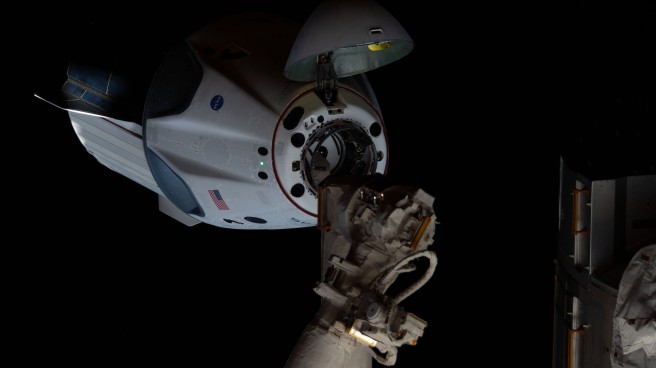There is a temptation to check off “sustainable” as a project feature merely because it appears likely to persist. Rather than this semi-circular definition, grappling with what is truly sustainable can move sideways. For one, sustainable space exploration and development can move to a measurable engineering feature – reusability. How much of something is reusable? What could be more sustainable than reusing what you already have and avoiding consuming resources to make a new one?
In my time at NASA, I saw reusability go from assumed to challenging to impossible and now (perhaps) to necessary. The impossible phase was after NASA’s reusable launch vehicle programs in the late 1990s (X-33 days). Certain talk went around – the Space Shuttle, a lot like these new programs, also showed reuse was technically possible but prohibitively expensive. Not surprisingly, the expendable Constellation program would follow the loss of Columbia. Somehow, we had forgotten the talk that went around after Apollo (according to my co-workers in Apollo at the time), that massive expendable Saturn rockets, spacecraft, and lunar landers had proven technically possible but prohibitively expensive.
Yet now we are rediscovering reusability. How the world has changed.
NASA has indirectly embraced launcher reuse, with SpaceX leading the way on the booster, not the part getting to orbit like the Space Shuttle. The first stage is reused now, not the last. SpaceX turned boosters around twice in 51 days in 2020, besting the record turnaround of 54 days on the Shuttle orbiter Atlantis in 1985. Just last week, SpaceX turned around another booster in a mere 27 days. Soon, SpaceX will use a “flight proven” booster to launch the 2nd US operational flight of a NASA crew to the ISS. This all happened more quickly than anyone expected. Even the yet to fly Orion spacecraft is being pushed toward reuse.
Reusability is no longer “used” – it’s “flight proven.”

This brings us to the older nay-saying on launcher reusability, where performance on a single flight was all that mattered. Never did a theoretical pound of payload in the future, ever figure out how to weigh so much more now, during design, development, or a single launch, as with a rocket.
Which brings up an obvious question. Is there any other industry on Earth where anything so expensive to manufacture as a rocket is one-use only? The tyranny of the rocket equation and the lack of experience may have limited us puny humans for a while, forcing us to ditch our ride as our tiny satellite barely made it to orbit. Decades later, as SpaceX is showing, the rocket equation hardly remains an excuse. The data shows steady progress on reusability – the number of reuses steadily increases, and the days between reusing the same booster steadily decrease.
Looking ahead, NASA’s new lunar landers (in early design), at the pointy end of the spear, are also baking in significant degrees of reuse. As product lifespans tend to increase, so long as there is competition, it’s natural to assume an economic eco-system where there is ongoing competition in space systems, in design, and throughout operations, whether in low Earth orbit or beyond to our Moon, will increasingly encourage more and more reuse. That reuse will make for space exploration that’s ever more sustainable.

There’s a saying about the three basic rules in life – never mix beer and wine, never fight a land war in Asia, and “put your personal mantra here.” If we are ever to go out to the stars and become “belters,” drawing from (near) endless resources beyond Earth, realizing the foolishness of cashing in the billion-year bonds back on Earth, perhaps the 3rd rule should be “always reuse.” Then, how we got out there would be consistent with why we are going.
Also see:
- An excellent piece from 2016 by John Gardi and Jon Ross on space launch and reusability – “The Future of Space Launch is Here! An illustrated guide to SpaceX’s launch vehicle reusability plans.”
- A reusable Space Shuttle Main Engine fired 10 times in 10 days for the DARPA Experimental Space Plane (XSP) program.

I never thought the argument that the shuttle proved that reusability was possible but vastly expensive made any sense.
IBM build a computer but it was massively expensive. Did that prove cheap PC’s were impossible?
This never makes sense. A data point sets an upper limit on cost, not a lower limit.
LikeLiked by 1 person
I agree. Yet too often I would hear the erroneous line of thought, rocket equation + reuse = shuttle = prohibitively expensive. It was the temptation to draw a trend-line through a single data point, without delving into what was X and what was Y.
LikeLike
You don’t need reuse to make your rocket prohibitively expensive. Look at SLS. All you need is a contract that incentivizes maximizing the cost. That gets you to prohibitive expense without reuse. That’s what we want and we will punish anyone who tries to take that away from us. Just ask Kathy Lueders.
LikeLike